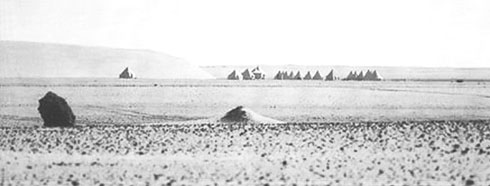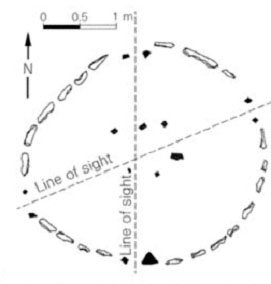
"... people living over seven thousand years ago may have possessed technical knowledge in astronomy and physics more advanced than our current understanding of the same subjects." -- Robert M. Schoch, geologist, 2002
"Even cursory initial consideration of the locations of the six Orion stars in question (Alnitak, Alnilam, Mintaka, Betelguese, Bellatrix, and Meissa) suggests that the megaliths probably represented them." -- Thomas G. Brophy, archaeoastronomer, 2002
"By even the more conservative estimate, these are by far the most certain ancient megalithic astronomical alignments known in the world." -- Thomas G. Brophy, archaeoastronomer, 2002
"Pursuing further what one would expect to be the logical meaning of the alignment distances in a chart, namely the actual distances to the stars, just for fun I looked up our current measures for the astrophysical distances to these stars. The best star distances astronomers have been able to measure are from the Hipparcos Space Astronomy satellite parallax measurements. Astonishingly, these Hipparcos astrophysical distance measurements match the megalith distance pattern quite well." -- Thomas G. Brophy, archaeoastronomer, 2002
The ancients knew the exact distances (in light years) of all the stars in Orion.
Hunter-gatherers?
Abderite LOL!
Malville, J.M., et al., Megaliths and Neolithic Astronomy In Southern Egypt, Nature, 392, pages 488-491, Apr 1998
We report the discovery of megalithic alignments and stone circles next to locations of Middle and Late Neolithic communities at Nabta, which suggest the early development of a complex society. The southward shift of the monsoons in the Late Neolithic age rendered the area once again hyperarid and uninhabitable some 4,800 radiocarbon years before the present (years bp). This well-determined date establishes that the ceremonial complex of Nabta, which has alignments to cardinal and solstitial directions, was a very early megalithic expression of ideology and astronomy.Wendorf, F., and Schild, R., Late Neolithic Megalithic Structures at Nabta Playa, Comparative Archaeology, Mar 1998
... the gates on the other two pairs form a line at 700 east of north, which aligns with the calculated position of sunrise at the summer solstice 6000 years ago. ... Charcoal from one of the numerous hearths around the "calendar" dated around 6800 years ago (6000 bp +- 60 years, CAMS - 17287).

Wendorf, F., et al., Holocene Settlement of the Egyptian Sahara: The Archaeology of Nabta Playa, 2001
Brophy, T.G.., The Origin Map: Discovery of a Prehistoric Megalithic Astrophysical Map and Sculpture of the Universe, 2002
Brophy, T.G., and Rosen, P.A., Satellite Imagery Measures of the Astronomically Aligned Megaliths at Nabta Playa, Bulletin of the American Astronomical Society, Volume 35, Page 1259, 2003
The satellite images allow refinement, often significant, of the reported locations of the megaliths. The report that the primary megalithic alignment was constructed to point to the bright star Sirius, circa 4,820 BC, is reconsidered in light of the satellite data, new field data, radiocarbon, lithostratigraphic and geochronologic data, and the playa sedimentation history. Other possible archaeoastronomical interpretations are considered for that alignment, including the three stars of Orion's Belt circa 6,270 BC that are also implicated in the small Nabta Playa `calendar circle'.Brophy, T.G., and Rosen, P.A., Satellite Imagery Measures of the Astonomically Aligned Megaliths at Nabta Playa, Mediterranean Archaeology and Archaeometry, Volume 5, Number 1, Pages 15-24, 2005
Malville, J.M., et al., Astronomy of Nabta Playa, Astrophysics and Space Science Proceedings: African Cultural Astronomy, Pages 131-143, Jan 2008














3 comments:
Fascinating. How how how how...
I believe exobiology is the answer to your how question. The Dogon say they were visited by mermen from the star Sirius called the Nommo (e.g. Cecrops I of Athens).
OIM,
It does not take a genius to see a stick stuck in the ground casting a shadow as a precursor of a clock, and a seasonal clock too, as well as a celestial clock under moonlight (or one of the Supernova)…
Now, to get all the people to come and drink soma, you need bunch of stones in a circle, and other stones to sacrifice a few hornless animals (Satapatha), except that they forgot their Vedic roots…
Post a Comment